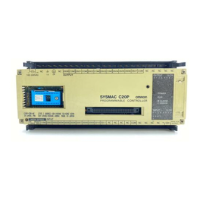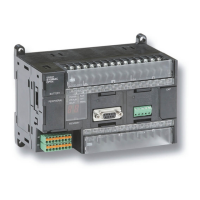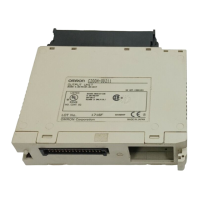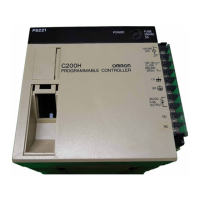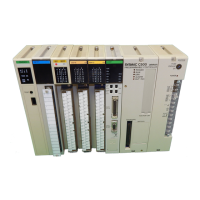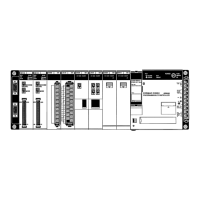245
Cycle Time/High-speed Processing Section 6-1
ground execution so that no more than one instruction is executed at
the same time.
3. If an instruction for which background execution has been specified is ex-
ecuted, execution will only be started in the cycle in which the execution
condition was met and execution will not be completed in the same cycle.
4. When background execution is started, the Communications Port Enabled
Flag for that port will be turned OFF.
5. Background execution will be continued over several cycles.
6. When processing has been completed, the Communications Port Enabled
Flag for that port will be turned ON. This will enable another instruction to
be executed in the background.
Applicable Instructions
■ Table Data Processing Instructions
■ Text String Processing Instructions
■ Data Shift Instructions
Differences between Instructions Executed Normally and in the Background
The differences between normal instruction execution and execution in the
background are listed below.
■ Outputting to Index Registers (IR)
If MAX(182) or MIN(183) is executed to output the I/O memory map address
of the word containing the minimum or maximum value to an index register,
the address will not be output to the index register and will be output to A595
and A596 instead. To store the address in an index register, use a Data Move
Instruction Mnemonic Function
code
DATA SEARCH SRCH 181
SWAP BYTES SWAP 637
FIND MAXIMUM MAX 182
FIND MINIMUM MIN 183
SUM SUM 184
FRAME CHECKSUM FCS 180
Instruction Mnemonic Function
code
MOVE STRING MOV$ 664
CONCATENATE STRING +$ 656
GET STRING LEFT LEFT$ 652
GET STRING RIGHT RIGHT$ 653
GET STRING MIDDLE MID$ 654
FIND IN STRING FIND$ 660
STRING LENGTH LEN$ 650
REPLACE IN STRING RPLC$ 661
DELETE STRING DEL$ 658
EXCHANGE STRING XCHG$ 665
CLEAR STRING CLR$ 666
INSERT INTO STRING INS$ 657
Instruction Mnemonic Function
code
ASYNCHRONOUS SHIFT REGISTER ASFT 017

